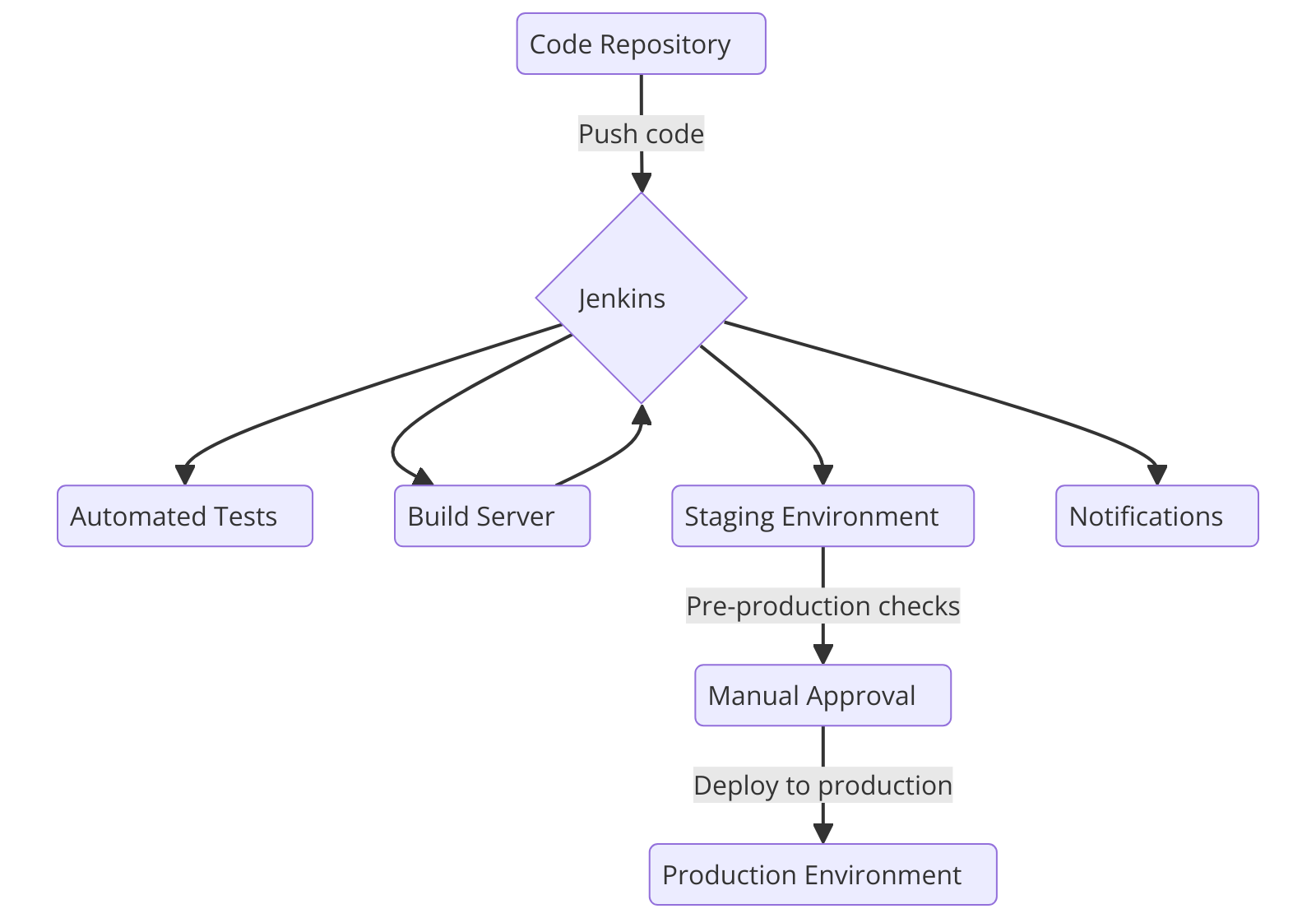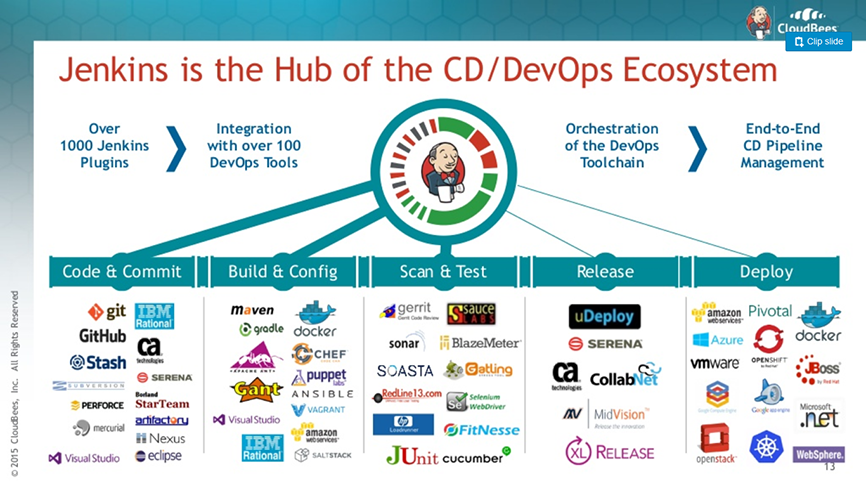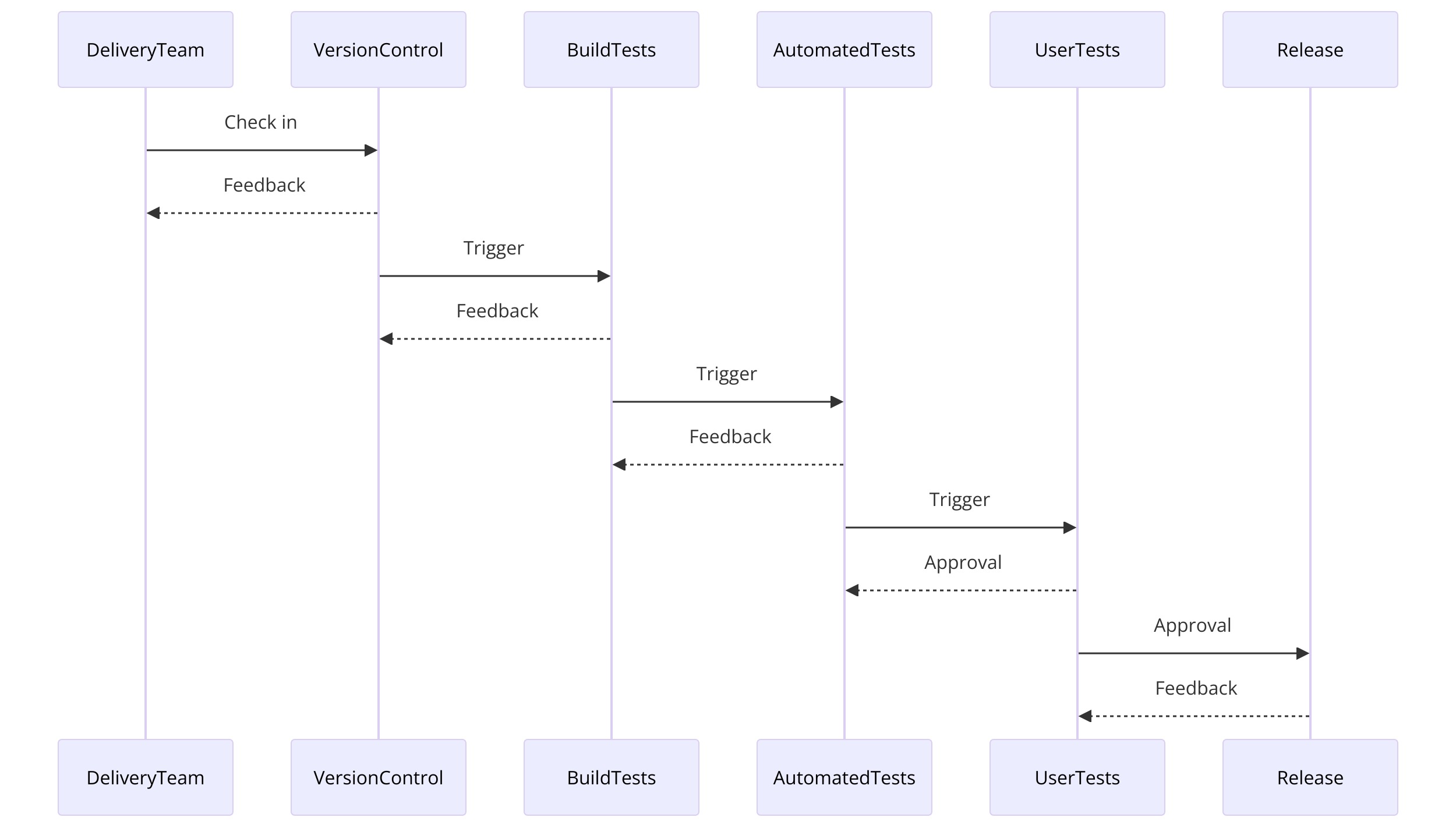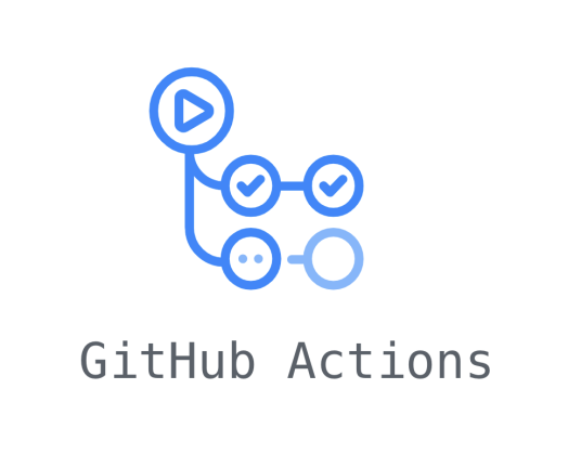Jenkins in the Age of Kubernetes: Strengths, Weaknesses, and Its Future in CI/CD
Learn why despite the rise of modern, cloud-native CI/CD tools like GitHub Actions and CircleCI, Jenkins remains a heavyweight in the CI and delivery space.
Join the DZone community and get the full member experience.
Join For FreeWhat Is Jenkins, and Why Does It Matter?
In the world of software development, speed and efficiency are everything. That's where Jenkins, a popular open-source automation server, steps in. Jenkins plays a key role in streamlining workflows by automating the building, testing, and deployment of code — tasks that would otherwise take up countless developer hours.
But why does Jenkins matter in the larger context of DevOps and CI/CD (Continuous Integration/Continuous Deployment)? Well, if you're part of a development team, you're likely familiar with these terms. DevOps aims to break down barriers between development and operations teams, enabling faster, more reliable software releases. CI/CD pipelines, in turn, automate the process of integrating new code and delivering updates to users, minimizing downtime and reducing errors.
Jenkins, being one of the oldest and most widely adopted CI/CD tools, has been a cornerstone of this shift. It enables teams to automate everything from building the code to testing and deploying it, helping companies deliver updates more efficiently. However, as newer tools like GitHub Actions and CircleCI enter the scene, you might be wondering: is Jenkins still relevant in 2024?
In this article, you’ll learn why Jenkins remains a critical tool in many enterprise environments and how it stacks up against newer alternatives.
The Role of Jenkins in DevOps, Build, and Release Engineering
Jenkins has a long and influential history in the world of software development. Originally developed as Hudson in 2004, Jenkins emerged as a leading open-source tool for automating parts of the software development lifecycle (SDLC), particularly within the DevOps ecosystem. DevOps practices focus on reducing the time between writing code and delivering it to production while ensuring high quality. Jenkins fits into this philosophy by enabling teams to automate repetitive tasks like code integration, testing, and deployment.

Figure 1: Jenkins and its ecosystem across different stages of the SDLC
One of Jenkins’ key roles is in the Continuous Integration (CI) process. CI is a development practice where developers frequently merge their code changes into a shared repository, often multiple times a day. Jenkins automates this process by fetching the latest code, compiling it, and running tests to ensure everything works before deploying the changes. This level of automation allows teams to catch issues early, avoiding painful, last-minute fixes.
Jenkins’ importance extends to Continuous Deployment (CD) as well. Once a build has passed the necessary tests, Jenkins can automate the deployment of that code to various environments — whether it’s staging, production, or anywhere in between. This makes it a central tool for DevOps and build engineering, helping teams maintain a steady, efficient pipeline from development to production.
By automating these crucial stages, Jenkins eliminates manual steps, increases efficiency, and ensures that code gets shipped faster and more reliably. Even as newer tools emerge, Jenkins’ ability to streamline workflows and its flexibility in handling large-scale projects has made it a staple in enterprise environments.
Figure 2: Different stages of SDLC
Jenkins Strengths: Enterprise Adoption and Plugin Ecosystem
One of Jenkins' biggest strengths lies in its extensive plugin ecosystem. Jenkins offers over 1,800 plugins, allowing teams to customize and extend the functionality of the tool to suit their specific needs. This plugin architecture makes Jenkins incredibly flexible, particularly for large enterprises that require bespoke workflows and integrations across a variety of development environments, testing frameworks, and deployment pipelines.
This flexibility is why Jenkins is widely adopted by enterprises. Its plugins enable teams to integrate with virtually any tool or service in the software development lifecycle, from source control systems like Git to cloud providers such as AWS and Google Cloud to notification services like Slack. Jenkins is designed to be adaptable, which is particularly valuable in complex projects where multiple tools need to work together seamlessly.
Another key strength is Jenkins' scalability. Jenkins can handle thousands of jobs across distributed environments, making it a popular choice for large organizations with massive, concurrent build pipelines. Whether it’s managing a simple application or a sprawling microservices architecture, Jenkins' ability to scale ensures it can meet the demands of the most complex development operations.
Jenkins' open-source nature also plays a major role in its popularity. It has a strong and active community that continuously contributes to the project, maintaining its relevance and expanding its capabilities over time. This community-driven approach means that when enterprises run into roadblocks, there’s usually already a plugin, guide, or support solution available.
In short, Jenkins’ rich plugin ecosystem, scalability, and open-source backing make it a powerhouse for enterprises looking to automate their CI/CD processes in a highly customizable way.
Jenkins Weaknesses: Stateful Architecture and Challenges with GitOps

One of Jenkins’ most significant weaknesses is its reliance on a stateful architecture. Unlike modern CI/CD tools that are designed to be stateless, Jenkins stores its build information and job configurations on the file system, without a dedicated database. This lack of a centralized state management system can lead to issues, especially when scaling Jenkins across multiple environments or instances. The result is a fragile system that requires careful handling to avoid inconsistencies and failures in large-scale, distributed setups.
Jenkins’ incompatibility with GitOps principles also limits its appeal in cloud-native and Kubernetes-focused environments. GitOps revolves around the idea of using Git as the single source of truth for infrastructure and application deployment. Modern CI/CD tools, such as Argo Workflows and Argo CD, are designed with GitOps in mind, offering seamless, declarative workflows that allow teams to manage infrastructure and applications using Git repositories. Jenkins, on the other hand, struggles to adapt to this approach due to its stateful nature and the complexity of configuring pipelines that align with GitOps principles.
As the industry moves towards containerization and Kubernetes-native CI/CD pipelines, Jenkins’ architecture often proves to be a hurdle. While it can be made to work in Kubernetes environments, it’s far from ideal. Jenkins requires a complex web of plugins and manual configurations to support Kubernetes workflows, whereas tools like Argo and Tekton are built specifically for these environments, providing native support and a more intuitive user experience.
Ultimately, Jenkins’ reliance on stateful architecture, difficulty scaling, and lack of GitOps-friendly workflows are key reasons why many teams have opted for more modern, Kubernetes-native alternatives like Argo Workflows and Argo CD.
Comparison: Jenkins vs GitHub Actions vs CircleCI vs Argo CD
As the landscape of CI/CD tools evolves, teams have more options than ever to build, test, and deploy their applications. Tools like GitHub Actions, CircleCI, and Argo CD have emerged as strong contenders in the modern, cloud-native development world. Let’s compare these tools to Jenkins to understand their strengths and weaknesses.
Jenkins: Flexibility and Customisation, But High Complexity

Jenkins has long been a go-to tool for enterprise-grade customization. Its extensive plugin ecosystem gives teams unparalleled flexibility to build highly tailored CI/CD pipelines. Jenkins excels in environments where deep integration with multiple systems and complex, distributed builds are required.
However, Jenkins’ plugin complexity and maintenance burden often outweigh its benefits, especially in Kubernetes-native workflows. Each plugin adds layers of configuration and dependency management, making it hard to maintain over time. Additionally, Jenkins' stateful architecture makes it a less natural fit for cloud-native environments, where stateless and GitOps-based approaches are becoming the norm.
GitHub Actions: Seamless GitHub Integration, Built for Simplicity

GitHub Actions is a relatively new CI/CD tool designed with simplicity in mind, making it especially attractive to developers who are already using GitHub for version control. Its tight integration with GitHub makes setting up CI/CD pipelines straightforward, with workflows defined through YAML files stored in the same repositories as your code. This makes GitHub Actions easy to use for small-to-medium projects or teams that prefer a lightweight solution.
GitHub Actions also natively supports containerized and Kubernetes workflows, making it a viable option for cloud-native teams. However, it lacks the deep customization and scalability that Jenkins offers, which can be a limitation for more complex, enterprise-grade projects.
CircleCI: Simplicity With Strong Kubernetes Support

CircleCI offers a cloud-native, container-centric approach to CI/CD that aligns well with modern development practices. Its interface is intuitive, and it supports parallel testing, automatic scaling, and strong Kubernetes integration out of the box. Teams using CircleCI benefit from faster setup times and a cleaner experience than Jenkins, especially for cloud-native or microservices-based architectures.
CircleCI also offers built-in support for Docker and Kubernetes, which makes it easier to configure and deploy pipelines in cloud environments. However, CircleCI can become expensive as teams scale, and while it’s simpler to manage than Jenkins, it doesn’t offer the same degree of customization for large, highly complex workflows.
Argo CD: GitOps-Native and Kubernetes-Centric

Argo CD is a Kubernetes-native CI/CD tool built with GitOps principles in mind. It operates by using Git repositories as the source of truth for both infrastructure and application deployment. Argo CD makes managing deployments in Kubernetes clusters highly efficient, as the entire state of the application is version-controlled and automated using Git commits.
For teams adopting Kubernetes and containerization as core elements of their infrastructure, Argo CD is one of the best tools available. It offers declarative, Git-driven workflows that simplify the process of deploying and scaling applications across cloud environments. Unlike Jenkins, which struggles with GitOps and Kubernetes integration, Argo CD is purpose-built for these use cases.
However, Argo CD is more specialized — it focuses solely on deployment and doesn’t cover the entire CI/CD process, such as continuous integration (CI). Teams often pair Argo CD with other tools like Argo Workflows or CircleCI to handle CI tasks. While it excels in the Kubernetes space, it may not be the right choice for organizations with less emphasis on containerization.
Key Takeaways
- Jenkins is most suitable for large enterprises that require deep customization and integration with legacy systems. However, its complexity and lack of native Kubernetes support are significant drawbacks.
- GitHub Actions is ideal for teams already embedded in GitHub, offering a simple, integrated solution for small-to-medium projects, with native Kubernetes support but limited scalability for complex workflows.
- CircleCI offers a cloud-native CI/CD solution focusing on containerization and Kubernetes scalability and ease of use, although with potentially higher costs as projects grow.
- Argo CD is the most Kubernetes-centric option, thriving in environments that follow GitOps principles. While it excels in Kubernetes-native deployments, it requires additional tools for a complete CI/CD pipeline.
Why Jenkins Still Has a Place in 2024
Despite the rise of modern, cloud-native CI/CD tools like GitHub Actions and CircleCI, Jenkins remains a heavyweight in the continuous integration and delivery space. Holding an estimated 44%-46% of the global CI/CD market in 2023, Jenkins continues to be widely adopted, with more than 11 million developers and over 200,000 active installations across various industries (CD Foundation)(CloudBees). This widespread usage reflects Jenkins' strong position in enterprise environments, where its robust plugin ecosystem and extensive customization options continue to deliver value.
One of Jenkins' major strengths is its extensibility. With over 1,800 plugins, Jenkins can integrate deeply with legacy systems, internal workflows, and various third-party tools, making it an essential part of many large-scale and complex projects (CloudBees). In industries where infrastructure and application delivery rely on specialized or customized workflows — such as finance, healthcare, and manufacturing — Jenkins' ability to adapt to unique requirements remains unmatched. This flexibility is a key reason why Jenkins is still preferred in enterprises that have heavily invested in their CI/CD pipelines.
Moreover, Jenkins continues to see substantial growth in its usage. Between 2021 and 2023, Jenkins Pipeline usage increased by 79%, while overall job workloads grew by 45% (CD Foundation)(CloudBees). These numbers indicate that, even in the face of newer competition, Jenkins is being used more frequently to automate complex software delivery processes.
Another factor contributing to Jenkins' staying power is its open-source nature and community support. With thousands of active contributors and corporate backing from major players like AWS, IBM, and CloudBees, Jenkins benefits from a large knowledge base and ongoing development (CD Foundation)(CloudBees). This ensures that Jenkins remains relevant and adaptable to emerging trends, even if its architecture is not as cloud-native as some of its newer competitors.
While Jenkins may not be the go-to for modern Kubernetes or GitOps-focused workflows, it continues to play a critical role in on-premise and hybrid environments where companies require greater control, customization, and integration flexibility. Its deep entrenchment in enterprise systems and ongoing improvements ensure that Jenkins still has a crucial place in the CI/CD ecosystem in 2024 and beyond.
Opinions expressed by DZone contributors are their own.

Comments